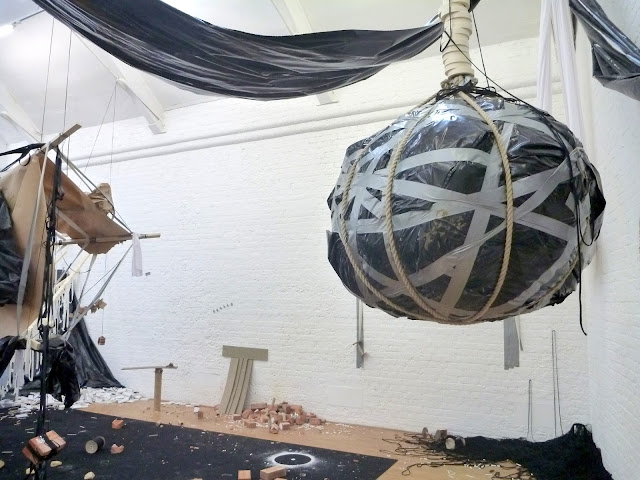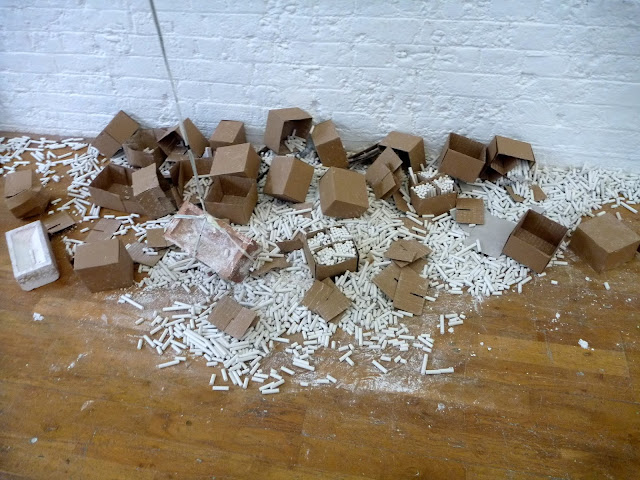After this first glimpse of total chaos
we concentrated on specific areas in the space, trying to unravel the chaos into small chunks that we could make sense of.
This site-specific installation by Brazilian artist Cinthia Marcelle is 'an experimental proposition to reinvent, relearn and reorganise'.
Shoelaces, matchboxes, smoke grenades, cotton bolts, black plastic sheeting, brown paper, bricks, masking tape, hook and loop fastener tape, chalk, stone, metal barrels, topsoil, gaffer tape, notebooks, chicken feathers, poplar wood batten, carpet, have all been used to create this installation.
The background to The Family in Disorder could be understood as the global crises of late capitalism and the current instability in Brazil, dating from the 2016 impeachment of President Dilma Rousseff. Members of Congress often cloaked their justification for Rousseff's impeachment in rhetoric citing the supposed 'protection of the family' from liberal values. The artist posed a series of open-ended questions in conceiving her work: 'what is a family? Can we talk about a family of materials, a family of the institution?
The installation also questions territory and occupation. The work resonates with the land occupation movement in Brazil, which has been led by the homeless, the disenfranchised and those pushed out by rising housing costs in large urban areas. Severe housing crises, manifesting in drastically different ways, are being experienced across the world from Sao Paolo to Oxford. This global concern regarding ownership and access led Marcelle to consider: 'to whom does the land belong? Who is this space for? Who owns or has access to these public art spaces?'
'An uprising takes place when people start to gather and move and appear and act in ways that seek to dismantle the regime or the power responsible for their subjugation'. Judith Butler.
The Family in Disorder is the result of dialogue and confrontation. Marcelle chose to hand over this half of the installation (the other half follows on) to a group of six artists and technicians and invited them 'to occupy the space' with its materials. This decision, entirely new to her practice, destabilises the expectation of individual creative authorship in favour of collective decision making.
A set of group rules was agreed prior to any action, including a ban on using external tools to work with the materials. The work is grounded in contemporary progressive political efforts to move beyond patriarchal and colonial structures within public society and discourse. By building, dismantling and re-building new structures within The Family in Disorder, the processes of the work are informed by the collective action of various protest movements and uprisings.
Having looked at, walked around and embraced chaos we moved on to the second part of the installation, in a different gallery where order reigned. We thus have a mirror image of chaos and order.
In this gallery, the unbranded materials are neatly stacked in regimented rows of distinct categories, presented in bulk quantities. Here, this structure seems to operate as a barrier, an ordered but impassable frontier.














No comments:
Post a Comment